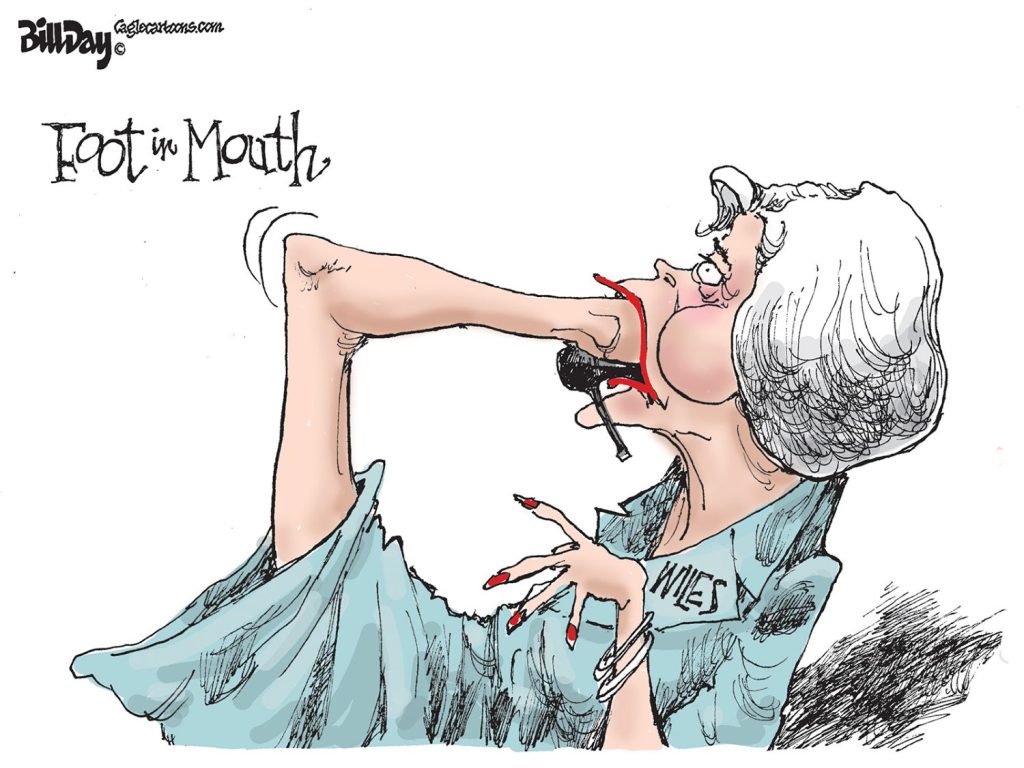There’s never been much question that the U.S.’s only European city is New Orleans.
And it seems to becoming even more so with the city’s new campaign adding bike lanes to many major roads. It’s a trend made even more remarkable by New Orleans’ long-time lack of interest in paving the roads themselves, but all of a sudden, bike lanes are appearing in unexpected places.
While we debate whether Madison Avenue can survive with two fewer lanes, New Orleans offers dramatic proof that it can. Carrollton Avenue, which is the street where St. Charles dead ends at the Camellia Grill, has long been a major four-lane thoroughfare for New Orleans.
It now is a two-lane street for an impressive stretch. There is a lane for traffic, a lane next to the curb for parking, and between them are bike lanes. Unsurprisingly, traffic movement on the stretch is none the worse for the change, and New Orleans feels even more European in sprit and in reality.
Build It, They Will Come
While some in Memphis contend that we don’t have a bike-oriented culture so more bike lanes are irrelevant, New Orleans reports impressive increases in bicyclists. Even more impressive is that Entergy and AARP have been major sponsors for this revolution in revolutions, inspired and driven by the Metro Bicycle Coalition, a nonprofit cycling advocacy group with growing influence in New Orleans.
City Hall also deserves credit. In about two years, city government has added 13 miles of bike paths and has plans to begin shortly to double that number. The city used bond money to finance “bikeway” development in conjunction with federally funded road resurfacing projects.
A Tulane University report concluded that where the lanes appear, cyclists follow, bringing with them the promise of fewer cars and better health. The study determined that there was a 60% increase in the number of riders within six months where bike lanes were added to the first New Orleans street.
City after city is adding bike lanes under the heading of attracting young, college-educated workers, but post-Katrina, New Orleans became a magnet for this demographic as thousands of people moved to the city to “help bring it back.” This new infusion of energy and vitality is producing renewed vibrancy and activity in the Big Easy with bike lanes, startups, and revitalized areas of the city like Bywater.
Transfusion of Energy and Talent
The infusion of young people is also responsible for a surge (leading the U.S.) in business creation. The State of Louisiana backed the entrepreneurs with a 25% tax credit for digital media purchases made in Louisiana, 35% credit for jobs created in the street, and no state capital gains taxes for LLC’s as a way to give benefits to high-growth, high-tech startups looking to sell to a larger company.
Many of these new startups began in one of the several Post-Katrina shared-office-space buildings and entrepreneurial incubators that opened like Launch Pad, Voodoo Ventures, Idea Village, IceHouse, and Entrepreneurs Row. The Post-Katrina world also brought a new reality – that New Orleans had to shake its old attitude that its economy was all about oil and gas, the port, and tourism.
As one young entrepreneur said: “There is a realization at the highest levels that our traditional economic drivers need to be augmented. I believe that market-driven investments will ultimately be what makes the startup scene in New Orleans competitive nationally. This is my way of giving back, yes, but also I am looking for opportunities, and New Orleans is ripe with them and underserved from a capital perspective.”
It’s hard to overestimate the impact of talent in a city, and no evidence is as persuasive or compelling as New Orleans. Besides bike lanes and startups, these young professionals are also revitalizing neighborhoods that were previously considered beyond hope. It took decades for the first tentative investments in the Faubourg Marigny, but today, redevelopment efforts extend beyond it to Bywater, part of the Ninth Ward of New Orleans but protected by Mississippi River levees.
Getting It Right
It became known as the “sliver by the river” since it was unaffected by Katrina flooding which devastated the Lower Ninth Ward, and today, 25-34 year-olds are moving into the area and transforming it.
New Orleans still has a long, long way to go, but it’s impossible not to admire the direction it is going. It maintains one of its greatest strengths – the wealth of locally-owned businesses like the miles of them that follow Magazine Avenue to Audubon Park with only a few national chain stores along the way. The danger that New Orleans’ cuisine culture would be decimated by Katrina has proven wrong. Instead, it has flourished and every visit to the city seems to offer a dozen new options for great food.
No one in New Orleans would suggest that Katrina was a good thing for the city, but it’s clear that the natural disaster focused everyone on what they most love about the remarkable city and deepened their pride and commitment to moving it ahead.
Hopefully, it won’t take a wake-up call from the New Madrid fault to get us similarly directed. More than anything, New Orleans has taken all the research about talent and proven it in reality. And in doing it, it treated talent as a key economic development objective.
Too Important to be Confined
That’s why we are troubled by a report (we hope rumor) that is circulating that the talent component of Memphis Fast Forward will be moved to its PeopleFirst program. The latter has been the priority of Fast Forward that has taken the longest time to take shape or to attract consensus. We’ve heard that it may now take on a structure similar to Operative Safe Community with an executive director.
But back to talent, let’s say this clearly: it does not belong in PeopleFirst. Yes, there needs to be a talent thread to PeopleFirst, but the issue as a whole does not. We are at the bottom of the largest 51 metros and with 60% of a city’s success related to its percentage of college-educated workers, the development of more college graduates is crucial to our future success. But our challenge is greater than tweaking our educational or workforce system.
Talent is an over-arching objective and placing it in PeopleFirst is too constricting. Talent is an economic development priority, and if moved there, there is a real risk that educators and workforce experts will try to force its square peg into one of their preconceived round holes.
A few years ago, nobody in Memphis talked about talent attraction, retention, and development. Today, everyone does, but we have to make sure that it does not just become the latest buzzword with little strategic thinking about how to overcome the tough challenges that we face. Or that it becomes one strand of a larger program with the wrong context for the most effective action.
Shotgun Approach
PeopleFirst is a fine program and a vital priority for concentrating on education and workforce, but those areas provide a limited, and ultimately poor, lens for assessing our talent problem and finding the answers with the most impact to solve them. Already, Leadership Memphis has adopted the Talent Dividend as its overriding reason to exist, MPACT has more useful data about young professionals and what will keep them here than anyone, and Leadership Academy works hard to connect them so they put down roots in Memphis.
We suggest that rather than trying to concentrate on a single rifle shot approach to talent, our real hope for success is to continue our shotgun approach. We need more people working from more angles at more strategies, because we have a long, long way to go and it is way too early to think that there is a single program, even if it is PeopleFirst, that encompasses all that has to be done, that has all of the right players at the table, or has the broad grassroots support needed for success.
As we said, our greatest fear is that talent becomes simply another buzzword, just as regionalism did a decade ago. We blew that chance for true regionalism, but if we blow our chance to increase the presence of talent in Memphis, we have in a real sense blown our chances for the future.
That’s because talent is not just about education and workforce. Rather, it’s about startups because 25-34 year-olds are the most entrepreneurial generation in history. It’s about a creative ecosystem, it’s about high quality of place, it’s about minority entrepreneurs, and it’s about opportunities.
Resisting Temptation
Because of this, it’s one of our toughest challenges, and we have to treat it the overriding city priority, not as social work, educational theory or workforce training enhancements. There’s so much riding on the right decision and we are lucky that Memphis Mayor AC Wharton and Shelby County Mayor Mark Luttrell have put a lot of their personal political equity into getting the issue of talent right.
They seem to understand that success is not about centralizing power or actions and the best leadership is about empowering the people already doing the work. As Mayor Wharton has aptly said, Memphis has no margin for error, and that’s why we hope that the mayors and others resist the temptation to tinker with what’s working and to deflate the energy of so many people who are producing results.



